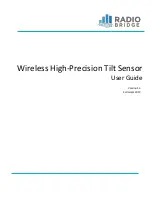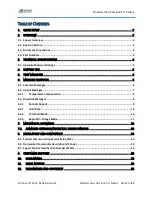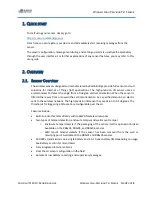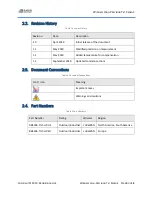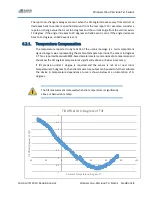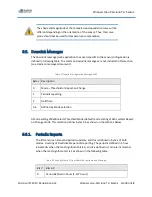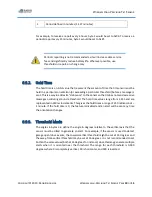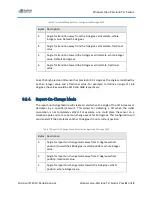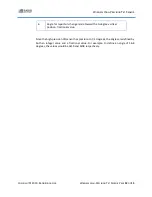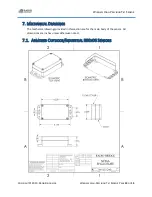
W
IRELESS
H
IGH
-P
RECISION
T
ILT
S
ENSOR
C
OPYRIGHT
©
2019,
R
ADIO
B
RIDGE
I
NC
.
W
IRELESS
H
IGH
-P
RECISION
T
ILT
S
ENSOR
P
AGE
10
OF
15
1
Period defined in minutes (1-127 minutes)
For example, to receive a report every 4 hours, byte 1 would be set to 0x04. To receive a
periodic report every 15 minutes, byte 1 would be set to 0x8f.
6.3.2.
Hold Time
The hold time is an 8-bit value that represent the amount of time the tilt sensor must be
held in a particular orientation (or exceeding a particular threshold) before a message is
sent. This is a way to add extra “debounce” to the sensor so that it does not send excessive
messages oscillating around a threshold. The hold time values range from 1-255 and are
represented in 250ms increments. This gives the hold times a range of 250 milliseconds
–
1 minute. If the hold time is 0, the feature is disabled and an alert will be sent any time
the orientation changes.
6.3.3.
Threshold Mode
The angles in bytes 3-6 define the angle in degrees relative to the vertical axis that the
sensor must be tilted to generate an alert. For example, if the sensor is used to detect
garage open/close events, the toward-vertical threshold might be set at 35 degrees and
the away-from-vertical threshold may be set at 55 degrees. It is not recommended to set
both to the same values (both at 45 degrees for instance) since this may generate multiple
alerts when it is oriented near the threshold. The range for each threshold is 0-180
degrees where 0 is completely vertical, 90 is horizontal, and 180 is inverted.
Periodic reporting is not recommended as it will increase data service
fees and significantly reduce battery life. Wherever possible, use
thresholds or report-on-change only.

